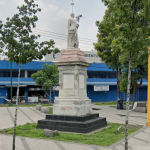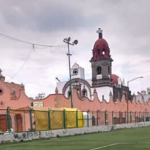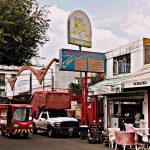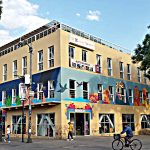Photo: Adam Brasher, Attribution-NonCommercial 2.0 Generic (CC BY-NC 2.0)
 Metro Tepito is at the southeast corner of the legendary but ill-defined Barrio Bravo of Tepito. Entrances and exits are on a mere four corners of the Eje 1 norte, here called Avenida Granaditas. It’s the eastern end of long stretch of markets. They begin with the Mercado Martínez de la Torre, four Metro stations away in the colonia Guerrero. Here, though, the market often grows positively sclerotic before finally turning to the south and east in the next block.
Metro Tepito is at the southeast corner of the legendary but ill-defined Barrio Bravo of Tepito. Entrances and exits are on a mere four corners of the Eje 1 norte, here called Avenida Granaditas. It’s the eastern end of long stretch of markets. They begin with the Mercado Martínez de la Torre, four Metro stations away in the colonia Guerrero. Here, though, the market often grows positively sclerotic before finally turning to the south and east in the next block.
The station logo refers to the neighborhood’s long history as a center for boxing gyms and training. The image itself was lifted from those used for the 1968 Olympic Games.
The Metro Tepito station opened in 1999 with the rest of Metro Line B. Today, it’s not one of the busier stations, not even on Line B. But it passes through some of the most densely populated parts of the City. It certainly makes getting through the main parts of the famous Tianguis above much easier, even when traffic is at an absolute standstill. And is it’s relatively easy to get a bit lost in amongst all the street stalls, it’s also a relief to know there are familiar stairs nearby.
 unidad_de_orientacion@metro.cdmx.gob.mx
unidad_de_orientacion@metro.cdmx.gob.mx
 5627.4950 / 5627.4741
5627.4950 / 5627.4741
 https://www.metro.cdmx.gob.mx/
https://www.metro.cdmx.gob.mx/

Nearest at 0.15 kms.

Nearest at 0.28 kms.

Nearest at 0.48 kms.

Spectacular cabaret theater in the middle of República de Cuba nightlife . . .

One of the grand old markets of Lagunilla in a cavernous historic building . . .

The corner market of La Lagunilla's furniture and design trade . . .

A massive market for footwear in fabulous Lagunilla/Tepito.

Garibaldi's important space for artisan goods, crafts, and food . . .